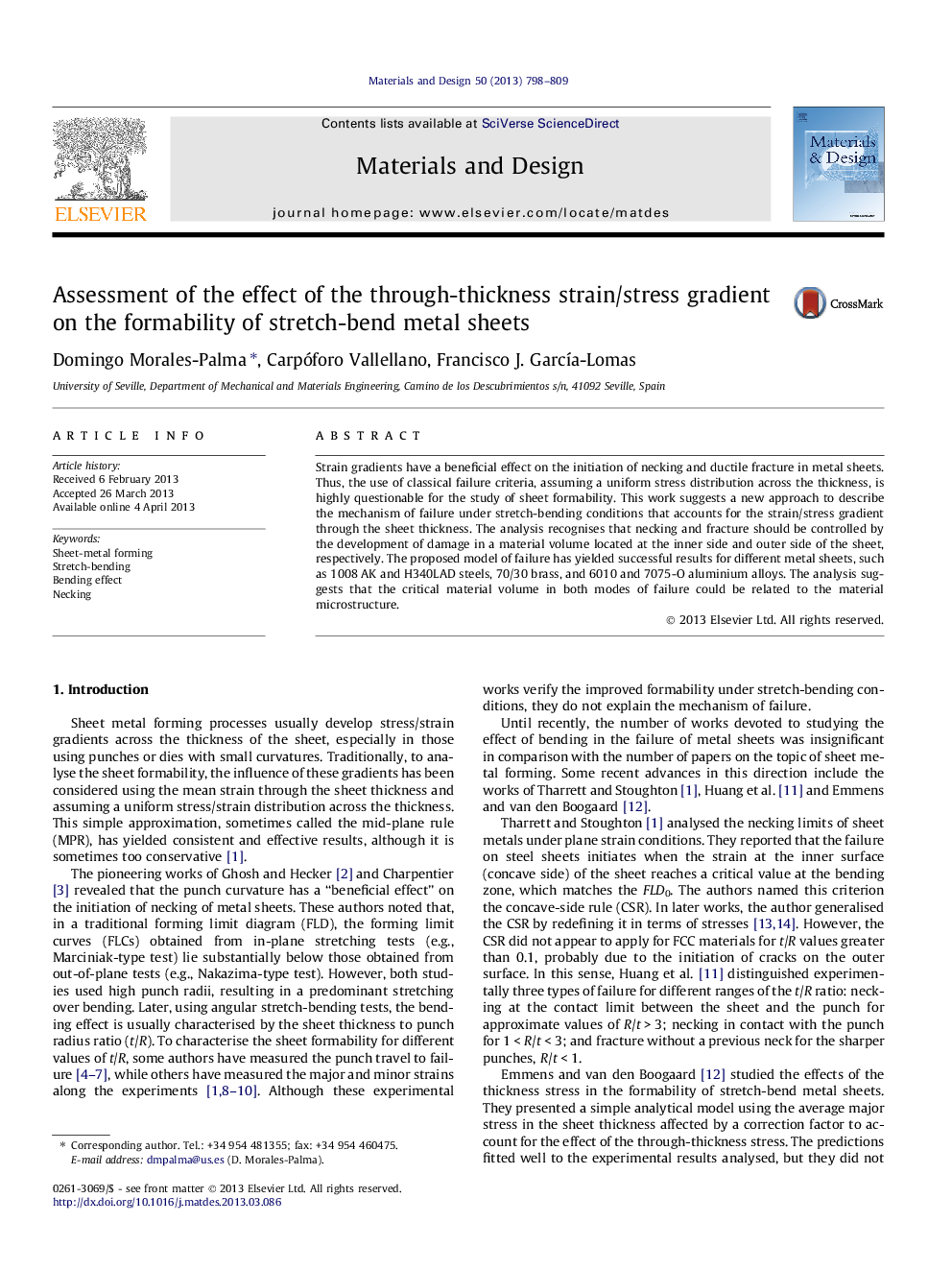| Article ID | Journal | Published Year | Pages | File Type |
|---|---|---|---|---|
| 830002 | Materials & Design (1980-2015) | 2013 | 12 Pages |
•The effect of stress/strain gradient on formability of metal sheets is analysed.•A failure criterion to predict localised necking and surface fracture is proposed.•The critical distance theory is used to assess the through-thickness stress gradient.•The forming limit stress curve (FLSC) is employed to minimise strain path-dependence.
Strain gradients have a beneficial effect on the initiation of necking and ductile fracture in metal sheets. Thus, the use of classical failure criteria, assuming a uniform stress distribution across the thickness, is highly questionable for the study of sheet formability. This work suggests a new approach to describe the mechanism of failure under stretch-bending conditions that accounts for the strain/stress gradient through the sheet thickness. The analysis recognises that necking and fracture should be controlled by the development of damage in a material volume located at the inner side and outer side of the sheet, respectively. The proposed model of failure has yielded successful results for different metal sheets, such as 1008 AK and H340LAD steels, 70/30 brass, and 6010 and 7075-O aluminium alloys. The analysis suggests that the critical material volume in both modes of failure could be related to the material microstructure.
